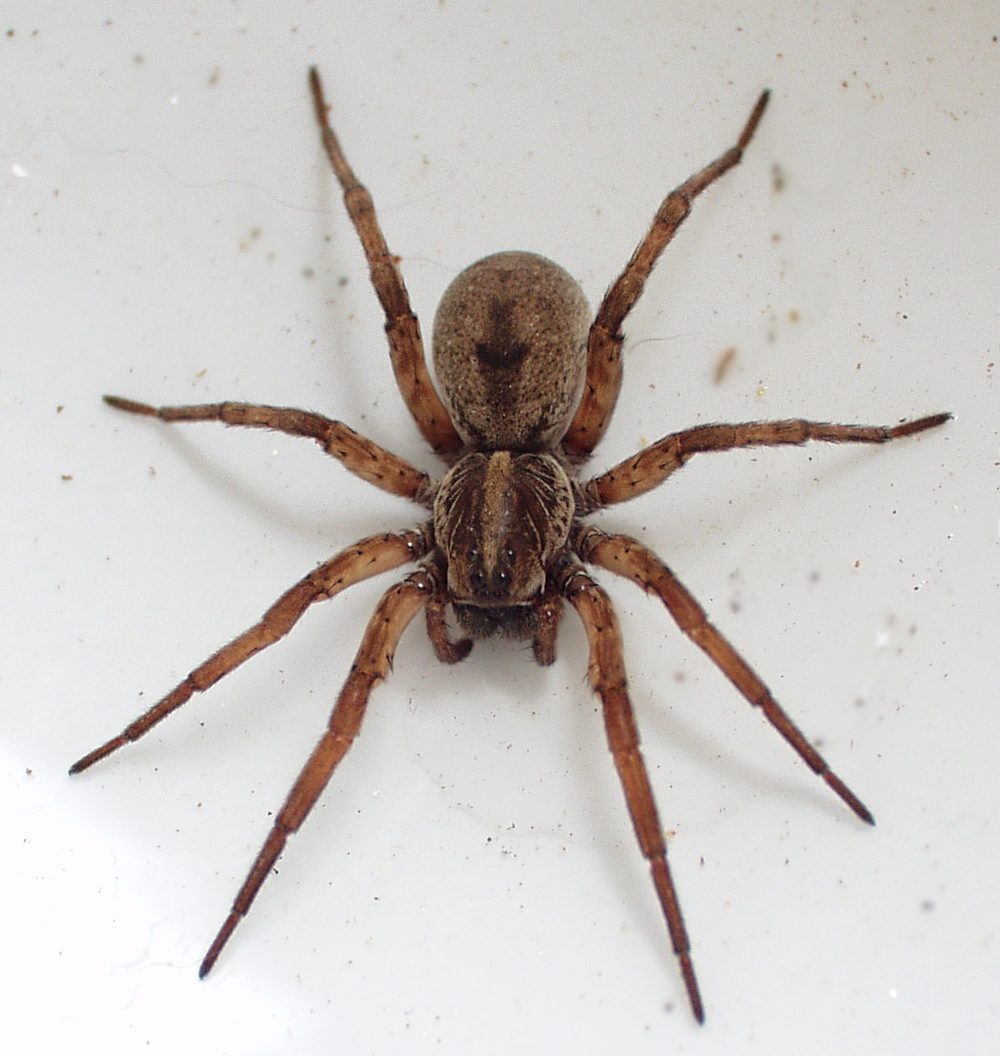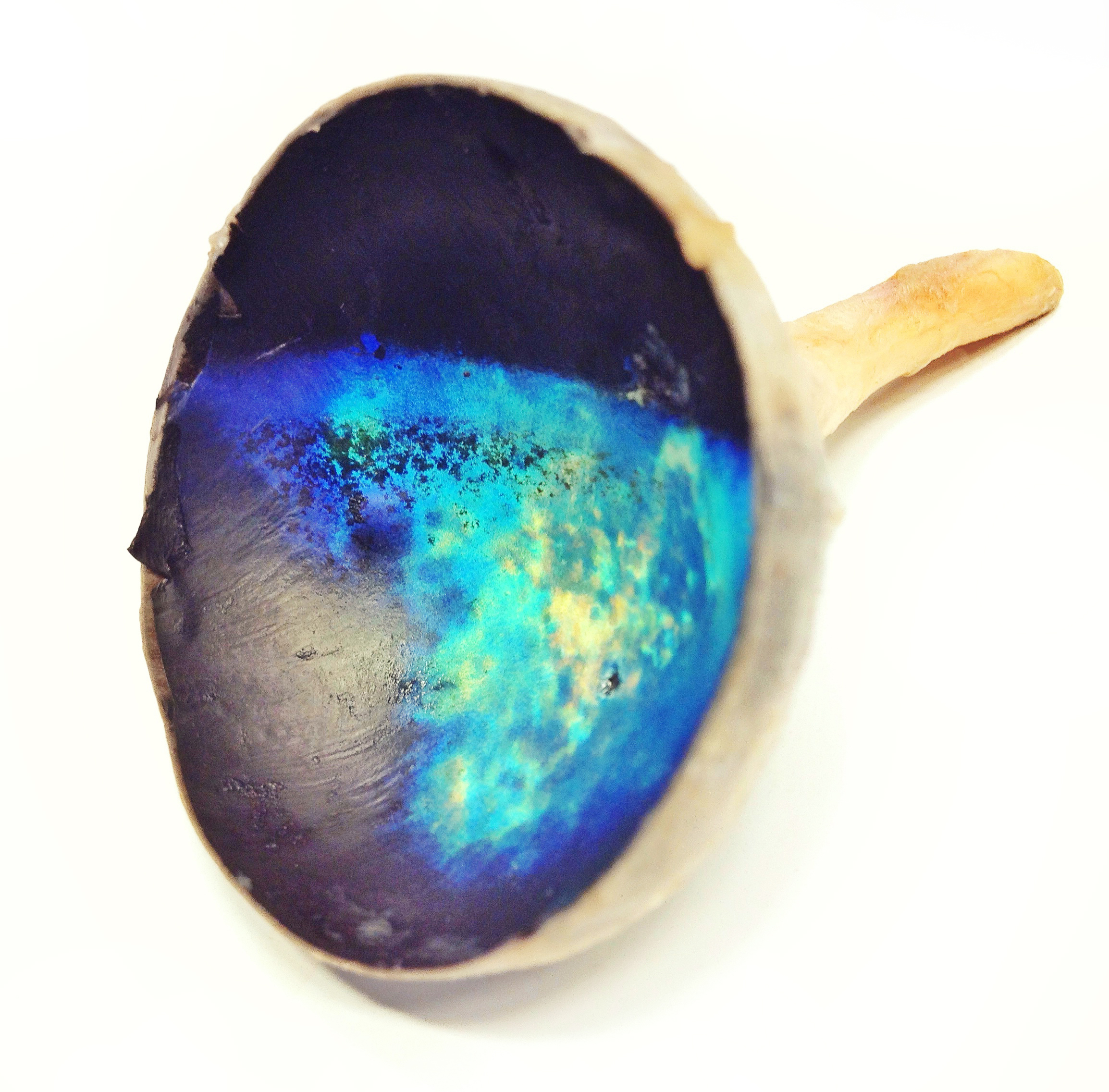|
Lycosidae
Wolf spiders are members of the Family (biology), family Lycosidae (), named for their robust and agile hunting skills and excellent eyesight. They live mostly in solitude, hunt alone, and usually do not spin spider web, webs. Some are opportunistic Hunting, hunters, pouncing upon Predation, prey as they find it or chasing it over short distances; others wait for passing prey in or near the mouth of a burrow. Wolf spiders resemble nursery web spiders (family Pisauridae), but wolf spiders carry their egg sacs by attaching them to their spinnerets, while the Pisauridae carry their egg sacs with their chelicerae and pedipalps. Two of the wolf spider's eight eyes are large and prominent; this distinguishes them from nursery web spiders, whose eyes are all of roughly equal size. This can also help distinguish them from the similar-looking Agelenidae, grass spiders. Description The many genera of wolf spiders range in body size (legs not included) from less than . They have eight eyes ... [...More Info...] [...Related Items...] OR: [Wikipedia] [Google] [Baidu] |
Hogna Helluo
''Tigrosa helluo'', commonly known as the Wetland Giant Wolf Spider, is a species of spider belonging to the family Lycosidae, also known as wolf spiders. ''T. helluo'' was formerly known as ''Hogna helluo'' before differences between dorsal color patterns, habitat preferences, body structures, etc. were discovered. The species is native to the United States, Canada, and Mexico. It can be found across the eastern half of the United States, primarily in the Northeast and New England, and as far west as Nebraska and Kansas. ''T. helluo'' can be found in diverse habitats including woods, marshes, fields, and riparian areas. Typically, members of this species prefer to live in wetter areas as opposed to dry environments. Males tend to live for around a year and females will live for close to two years. The defining characteristic of ''T. helluo'' is its brown carapace and distinct yellow stripe starting from its anterior eyes extending down the cephalothorax. The unde ... [...More Info...] [...Related Items...] OR: [Wikipedia] [Google] [Baidu] |
Hogna Carolinensis
''Hogna carolinensis'', commonly-known as the Carolina wolf spider and giant wolf spider, is found across North America. It is the largest of the wolf spiders in North America, typically measuring at 18-20mm for males and 22-35mm for females. The Carolina wolf spider is mottled brown with a dark underside. Males have orange coloration on their sides. They live in either self-made burrows or ones they find. Like all wolf spiders, ''H. carolinensis'' does not make a web to catch prey. They hunt by ambushing prey from their burrows. These spiders are particularly-known for the females carrying their egg-sacs on their bodies during the incubation period. The Carolina wolf spider also has a unique type of venom that both paralyzes their prey and helps prevent microbes from their prey infecting them. ''H. carolinensis'' is able to thermoregulate quite well. This is particularly important for animals that inhabit desert ecosystems or other locations with large temperature swings. Na ... [...More Info...] [...Related Items...] OR: [Wikipedia] [Google] [Baidu] |
List Of Lycosidae Species
This page lists all described species of the spider family Lycosidae Wolf spiders are members of the Family (biology), family Lycosidae (), named for their robust and agile hunting skills and excellent eyesight. They live mostly in solitude, hunt alone, and usually do not spin spider web, webs. Some are opportunis ... as of December 29, 2013. Acantholycosa '' Acantholycosa'' Dahl, 1908 * '' Acantholycosa aborigenica'' Zyuzin & Marusik, 1988 — Russia, Mongolia * '' Acantholycosa altaiensis'' Marusik, Azarkina & Koponen, 2004 — Russia * '' Acantholycosa azarkinae'' Marusik & Omelko, 2011 — Russia * '' Acantholycosa azheganovae'' (Lobanova, 1978) — Russia * '' Acantholycosa azyuzini'' Marusik, Hippa & Koponen, 1996 — Russia * '' Acantholycosa baltoroi'' (Caporiacco, 1935) — Kashmir, Nepal, China * '' Acantholycosa dudkoromani'' Marusik, Azarkina & Koponen, 2004 — Russia * '' Acantholycosa dudkorum'' Marusik, Azarkina & Koponen, 2004 — Russia * '' Acantholycosa katu ... [...More Info...] [...Related Items...] OR: [Wikipedia] [Google] [Baidu] |
Hogna
''Hogna'' is a genus of wolf spiders with more than 200 described species. It is found on all continents except Antarctica. Etymology The word ''Hogna'' might be a rough latinization of one of the Greek words '' ὄχνη'' (''ókhnē'') "pear" or '' ὄγχνη'' (''ónkhnē'') "pear-tree". Species ''Hogna carolinensis'' is among the largest spiders found in the United States; females may have a body length of from to . The carapace of ''H. carolinensis'' is characterized by an overall dark brown coloration, usually without any patterned variations. Its abdomen has a slightly darker stripe down its center, and its ventral side is black. This spider typically dwells in a vertical tube dug into the ground that may reach as deep as eight inches. , the World Spider Catalog accepted the following species: *'' Hogna ackermanni'' Logunov, 2020 – Afghanistan *'' Hogna adjacens'' Roewer, 1959 – Southern Africa *'' Hogna agadira'' (Roewer, 1960) – Morocco *'' Hogna albe ... [...More Info...] [...Related Items...] OR: [Wikipedia] [Google] [Baidu] |
Lycosoid
Lycosoidea is a clade or superfamily of araneomorph spiders. The traditional circumscription was based on a feature of the eyes. The tapetum is a reflective layer at the back of the eye, thought to increase sensitivity in low light levels. Lycosoids were then defined by having a "grate-shaped" tapetum. Research from the late 1990s onwards suggests that this feature has evolved more than once, possibly as many as five times, so that the original Lycosoidea is paraphyletic. Studies published in 2014 and 2015 suggest that a smaller group of families does form a clade. The reflective attributes of the tapeta vary significantly among lycosoid spiders. Phylogeny The phylogeny of the Lycosoidea and related groups has been studied using both morphological and molecular data. Comparing these studies is complicated by the redrawing of family boundaries. Thus potential lycosoid genera placed in the family Miturgidae in 1993, such as '' Uliodon'', have since been placed in the Zoropsidae ... [...More Info...] [...Related Items...] OR: [Wikipedia] [Google] [Baidu] |
Spider Bite
A spider bite, also known as arachnidism, is an injury resulting from the bite of a spider. The effects of most bites are not serious. Most bites result in mild symptoms around the area of the bite. Rarely they may produce a necrotic skin wound or severe pain. Most spiders do not cause bites that are of importance. For a bite to be significant, substantial envenomation is required. Bites from the Latrodectus, widow spiders involve a neurotoxic venom which produces a condition known as latrodectism. Symptoms may include pain which may be at the bite or involve the chest and abdomen, sweating, muscle cramps and vomiting among others. Bites from the recluse spiders cause the condition loxoscelism, in which local necrosis of the surrounding skin and widespread hemolysis, breakdown of red blood cells may occur. Headaches, vomiting and a mild fever may also occur. Other spiders that can cause significant bites include the Australian funnel-web spider and Phoneutria fera, South Ameri ... [...More Info...] [...Related Items...] OR: [Wikipedia] [Google] [Baidu] |
Spider
Spiders (order (biology), order Araneae) are air-breathing arthropods that have eight limbs, chelicerae with fangs generally able to inject venom, and spinnerets that extrude spider silk, silk. They are the largest order of arachnids and rank seventh in total species diversity among all Order (biology), orders of organisms. Spiders are found worldwide on every continent except Antarctica, and have become established in nearly every land habitat. , 53,034 spider species in 136 Family (biology), families have been recorded by Taxonomy (biology), taxonomists. However, there has been debate among scientists about how families should be classified, with over 20 different classifications proposed since 1900. Anatomy, Anatomically, spiders (as with all arachnids) differ from other arthropods in that the usual body segmentation (biology), segments are fused into two Tagma (biology), tagmata, the cephalothorax or prosoma, and the opisthosoma, or abdomen, and joined by a small, cylindr ... [...More Info...] [...Related Items...] OR: [Wikipedia] [Google] [Baidu] |
Tapetum Lucidum
The ; ; : tapeta lucida) is a layer of tissue in the eye of many vertebrates and some other animals. Lying immediately behind the retina, it is a retroreflector. It Reflection (physics), reflects visible light back through the retina, increasing the light available to the Photoreceptor cell, photoreceptors (although slightly blurring the image). The tapetum lucidum contributes to the superior night vision of some animals. Many of these animals are nocturnality, nocturnal, especially carnivores, while others are Deep-sea community, deep-sea animals. Similar adaptations occur in some species of spiders. Haplorhini, Haplorhine primates, including humans, are Diurnality, diurnal and lack a tapetum lucidum. Function and mechanism The presence of a tapetum lucidum enables animals to see in dimmer light than would otherwise be possible. The tapetum lucidum, which is iridescent, reflects light roughly on the Interference (wave propagation), interference principles of thin-film opti ... [...More Info...] [...Related Items...] OR: [Wikipedia] [Google] [Baidu] |
Pisauridae
Nursery web spiders (Pisauridae) are a family of araneomorph spiders first described by Eugène Simon in 1890. Females of the family are known for building special nursery webs. When their eggs are about to hatch, a female spider builds a tent-like web, places her egg sac inside, and stands guard outside, hence the family's common name. Like wolf spiders, however, nursery web spiders are roaming hunters that do not use webs for catching prey. Species occur throughout the world except for extremely dry or cold environments, and are common just about everywhere. Many can walk on the surface of still bodies of water and may even dive beneath the surface temporarily to escape enemies. They can jump a distance of , but they have trouble climbing extremely smooth surfaces such as glass. The name "nursery web spider" is especially given to the European species ''Pisaura mirabilis''. Adult female specimens may reach up to 15 mm in length, excluding legs. The legs of the male are ... [...More Info...] [...Related Items...] OR: [Wikipedia] [Google] [Baidu] |
Jumping Spider
Jumping spiders are a group of spiders that constitute the family (biology), family Salticidae. , this family contained over 600 species description, described genus, genera and over 6,000 described species, making it the largest family of spiderscomprising 13% of spider species. Jumping spiders have some of the best visual perception, vision among arthropods — being capable of stereoptic color vision — and use sight in courtship, hunting, and navigation. Although they normally move unobtrusively and fairly slowly, most species are capable of very agile jumps, notably when hunting, but sometimes in response to sudden threats or crossing long gaps. Both their book lungs and Invertebrate trachea, tracheal system are well-developed, and they use both systems (bimodal breathing). Jumping spiders are generally recognized by their eye pattern. All jumping spiders have four pairs of eyes, with the Anatomical terms of location, anterior median pair (the two front middle eyes) being pa ... [...More Info...] [...Related Items...] OR: [Wikipedia] [Google] [Baidu] |





